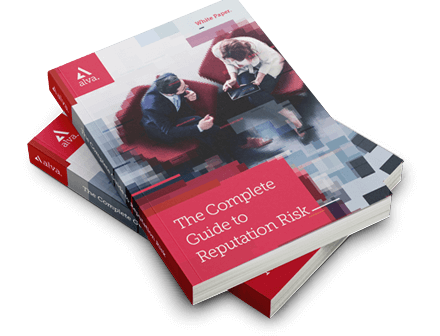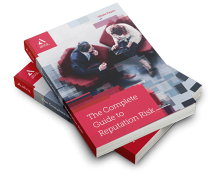Six steps to rebuild reputation after a reputation crisis
Politicians, multi-national corporations, charities, local businesses – reputational damage is a risk for all those in the public eye and is almost unavoidable for any individual or organisation with a global, online or even high street presence.
With this in mind, forward-thinking corporate comms teams will have a plan in place to rebuild and renew a tarnished reputation. Specifics will depend on the nature of the fault, but there are several strategies that can be universally applied.
How to rebuild reputation after a crisis
1. Keep talking
Communication is key. Being slow to admit a fault, or worse, staying silent on a difficult subject, will only serve to further reduce reputational credit. So say sorry – and say it soon – but when doing so, lean in on the positives, and try to reframe the negative issues. Any mea culpa should be heartfelt – a media statement, heavily vetted by a legal team and delivered under duress, will undermine, not repair, a reputation. Understand who you’re speaking to and through what channels – in the social media era, every comment will be analysed, and criticised. Be open about what has gone wrong, and clear about the steps being taken to rectify the problem.
2. Take responsibility, in time
Having admitted the fault, make sure you do actually fix it. Actions speak louder than words, and nothing will prolong reputational damage more than continuing the unacceptable policies, activities, or failures. Timing is vital here – fast action is essential, but it also requires measured consideration. There’s no point apologising and then patching a problem if another catastrophe is waiting in the wings. Make sure the storm before you try to mend the damage. The Volkswagen emissions scandal is a case in point. Three years after it broke in 2015, having failed to act decisively, the automotive company was still facing new rounds litigation by those effected.
3. Get stakeholders onside
The first people to appease are the major stakeholders in your business. Whatever has been done to alienate them needs to be rectified, but after that, the hard work lies in bringing your organisation back into alignment with their expectations. Your ability to do this rests on having an effective stakeholder engagement plan. Connected business intelligence will allow you to identify who your primary stakeholders are, what they need, and what they should be told.
4. Be authentic
A knee-jerk reaction to reputational damage can be to weigh in on corporate social responsibility. And while demonstrating a social conscience and recognising the organisation’s place in, and affect on, society is key, especially when trying to right a wrong, beware of the ‘moral trap’ of appearing overly conscientious, and therefore sparking cynicism. Be authentic to what the business is and does – if you’re a profit-first organisation, you will do yourself no favours by trying to disguise it, and presenting yourself as unconvincingly altruistic. When Starbucks published its tax results last year, it made no secret of the fact it paid only 2.8% in the UK, saying that it adhered to tax legislation in territories where it operates, and its primary aim is to protect its shareholders interests. It’s a coffee shop chain, not a charity, after all.
5. Show strong leadership
Like the manager of a losing football team, an organisation’s executives can be made to bear the blame for any reputation damage. Whether this is fair, or whether the circumstances are beyond their control, the solution might have to be the same – a change of face at the top. A new leader coming into a reputational crisis can turn the tide, but only if they show resolve and take decisive, effective action. Leadership in the corporate comms team is also vital in repairing damage, as they are responsible for connecting the businesses with its stakeholders and the wider public.
6. The best defence
To reuse the football analogy, the best offence is a good defence, and the best way to rebuild a reputation at speed is to be prepared in advance. Have a plan in place to manage risk, and don’t let it spiral into crisis. Know-how, in the unfortunate event of a reputational tailspin, you will bring the organisation back onto a stable flight path.
Be part of the
Stakeholder Intelligence community











